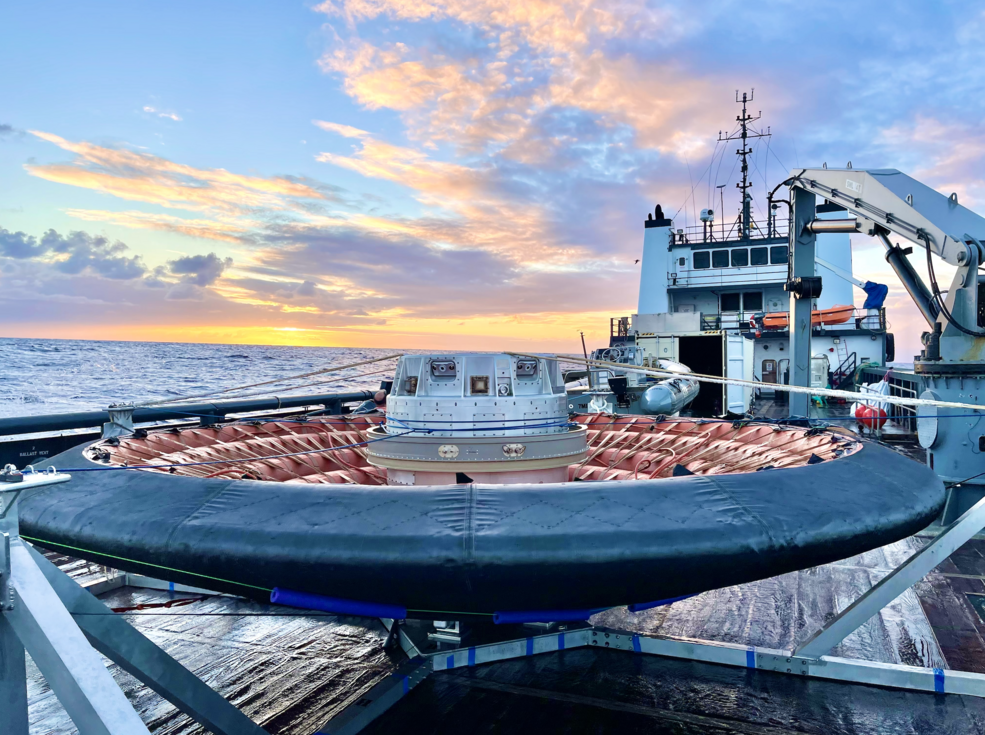NASA Partners with American Companies on Key Moon, Exploration Tech
NASA has selected 11 U.S. companies to develop technologies that could support long-term exploration on the Moon and in space for the benefit of all.

This release was updated July 25, 2023, to correct the number of projects.
NASA has selected 11 U.S. companies to develop technologies that could support long-term exploration on the Moon and in space for the benefit of all. The technologies range from lunar surface power systems to tools for in-space 3D printing, which will expand industry capabilities for a sustained human presence on the Moon through Artemis, as well as other NASA, government, and commercial missions.
"Partnering with the commercial space industry lets us at NASA harness the strength of American innovation and ingenuity," said NASA Administrator Bill Nelson. "The technologies that NASA is investing in today have the potential to be the foundation of future exploration."
The projects, chosen under the agency’s sixth Tipping Point opportunity, will be funded jointly by NASA and the industry partners. The total expected NASA contribution to the partnerships is $150 million. Each company will contribute a minimum percentage – at least 10-25%, based on company size – of the total project cost. NASA’s Space Technology Mission Directorate (STMD) will issue milestone-based funded Space Act Agreements lasting for up to four years.
The selected technologies support infrastructure and capabilities in space and at the Moon. Six of the selected companies are small businesses. The awarded companies, their projects, and the approximate value of NASA’s contribution are:
- Astrobotic Technology of Pittsburgh, $34.6 million – LunaGrid-Lite: Demonstration of Tethered, Scalable Lunar Power Transmission
- Big Metal Additive of Denver, $5.4 million – Improving Cost and Availability of Space Habitat Structures with Additive Manufacturing
- Blue Origin of Kent, Washington, $34.7 million – In-Situ Resource Utilization (ISRU)-Based Power on the Moon
- Freedom Photonics of Santa Barbara, California, $1.6 million – Highly Efficient Watt-Class Direct Diode Lidar for Remote Sensing
- Lockheed Martin of Littleton, Colorado, $9.1 million – Joining Demonstrations In-Space
- Redwire of Jacksonville, Florida, $12.9 million – Infrastructure Manufacturing with Lunar Regolith – Mason
- Protoinnovations of Pittsburgh, $6.2 million – The Mobility Coordinator: An Onboard COTS (Commercial-Off-the-Shelf) Software Architecture for Sustainable, Safe, Efficient, and Effective Lunar Surface Mobility Operations
- Psionic of Hampton, Virginia, $3.2 million – Validating No-Light Lunar Landing Technology that Reduces Risk, SWaP (Size, Weight, and Power), and Cost
- United Launch Alliance of Centennial, Colorado, $25 million – ULA Vulcan Engine Reuse Scale Hypersonic Inflatable Aerodynamic Decelerator Technology Demonstration
- Varda Space Industries of El Segundo, California, $1.9 million – Conformal Phenolic Impregnated Carbon Ablator Tech Transfer and Commercial Production
- Zeno Power Systems of Washington, $15 million – A Universal Americium-241 Radioisotope Power Supply for Artemis
"Our partnerships with industry could be a cornerstone of humanity's return to the Moon under Artemis," said Dr. Prasun Desai, acting associate administrator for STMD at NASA Headquarters in Washington. "By creating new opportunities for streamlined awards, we hope to push crucial technologies over the finish line so they can be used in future missions. These innovative partnerships will help advance capabilities that will enable sustainable exploration on the Moon."
Five of the technologies will help humanity explore the Moon. For astronauts to spend extended periods of time on the lunar surface, they will need habitats, power, transportation, and other infrastructure. Two of the selected projects will use the Moon’s own surface material to create such infrastructure – a practice called in-situ resource utilization, or ISRU. Redwire will develop technologies that would allow use of lunar regolith to build infrastructure like roads, foundations for habitats, and landing pads.
Blue Origin’s technology could also make use of local resources by extracting elements from lunar regolith to produce solar cells and wire that could then be used to power work on the Moon.
Astrobotic’s selected proposal will advance technology to distribute power on the Moon’s surface, planned to be tested on a future lunar mission. The company’s CubeRover would unreel more than half a mile (one kilometer) of high-voltage power line that could be used to transfer power from a production system to a habitat or work area on the Moon.
The remaining six projects will help create new capabilities in other areas of space exploration and Earth observation. Freedom Photonics will develop a novel laser source that could enable a more efficient lidar system – a technology similar to radar that uses light instead of radio waves to make measurements. This system could better detect methane in Earth’s atmosphere and improve scientists’ understanding of climate change.
United Launch Alliance will continue development of inflatable heat shield technology, building on the success of LOFTID (Low-Earth Orbit Flight Test of an Inflatable Decelerator). ULA will further develop the technology for possible use to return large rocket components from low Earth orbit for reuse. Such technology could also be used to land heavier payloads – such as the infrastructure required for crewed missions – on destinations like Mars.
For more information about NASA’s latest Tipping Point selections, visit:






















